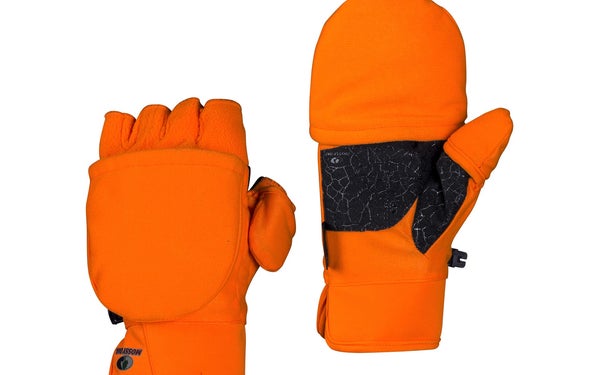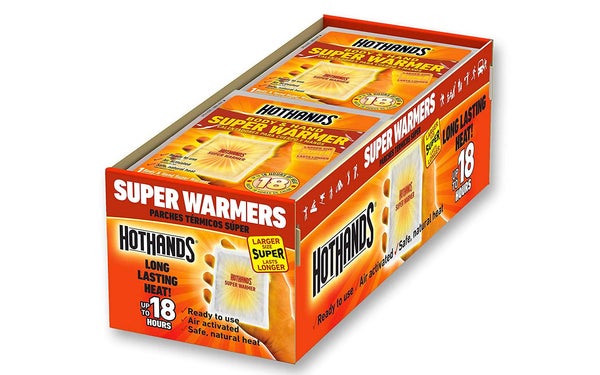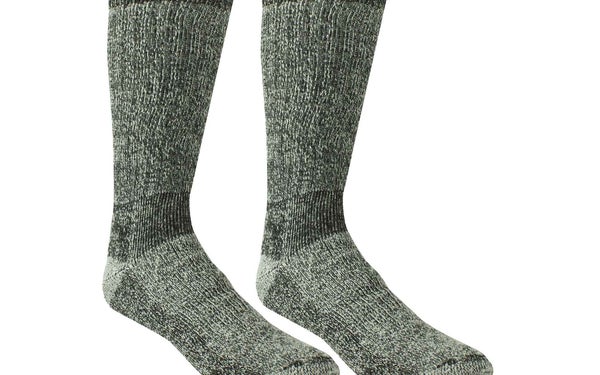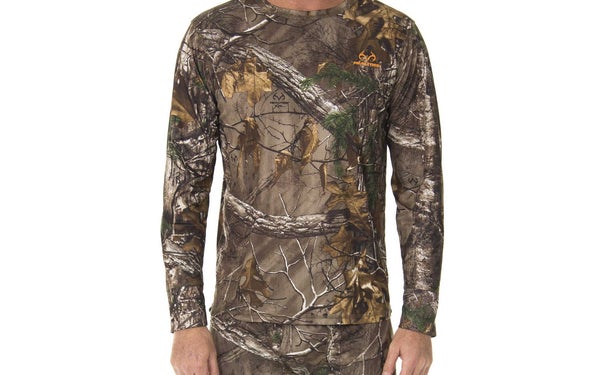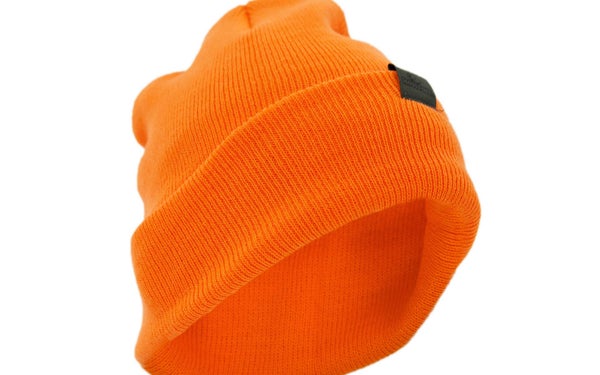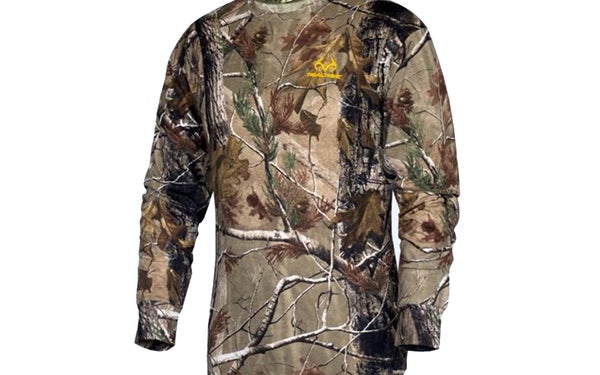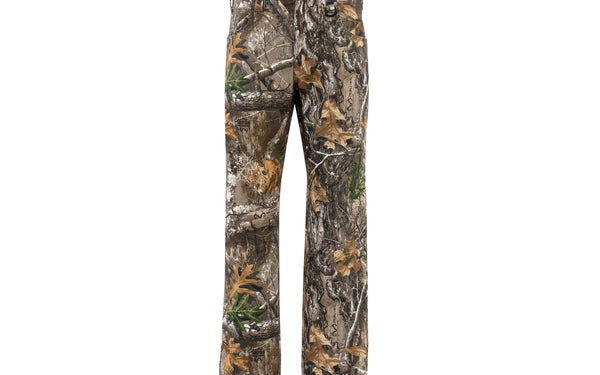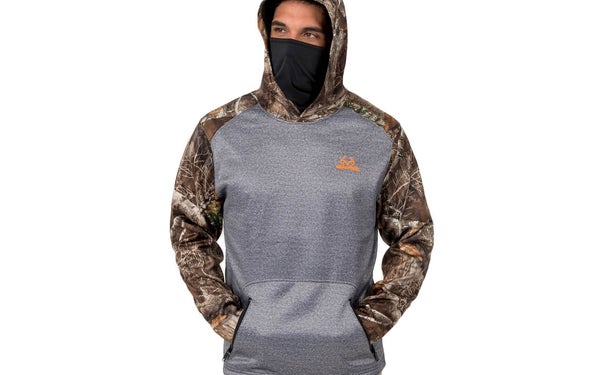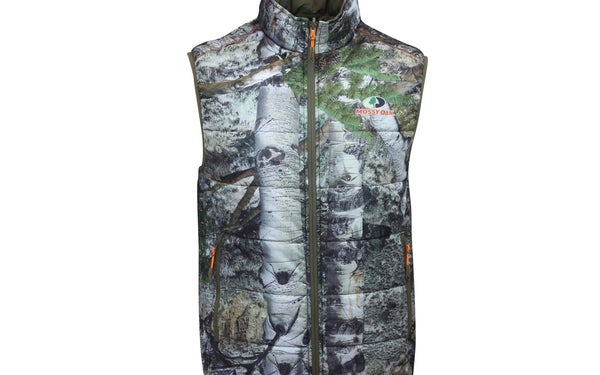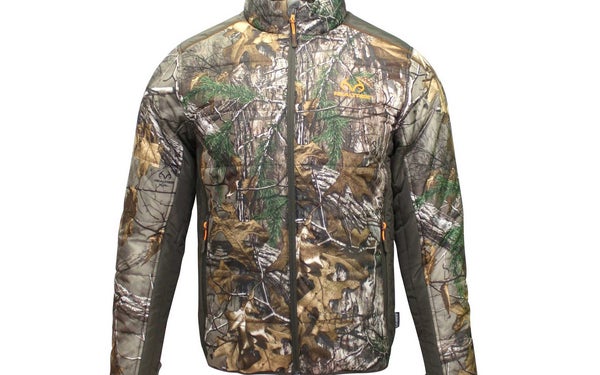10 Things You Need To Stay Warm While Sitting In A Tree Stand
Sitting in a tree stand waiting for a big buck to come by can be one of the most pleasant activities you’ll ever experience—unless you’re not dressed properly on a very cold day.

We may earn revenue from the products available on this page and participate in affiliate programs. Learn more ›
For serious deer hunters, there’s nothing quite like the anticipation of sitting in a tree stand waiting for a big buck to pass by within bow or gun range. For many, those precious fall moments in a stand are what they dream of nearly every day during the off season. Depending on the weather, a long sit in a tree stand can be comfortable or decidedly less so. Gearing up properly before the season will ensure you’ll stay in your stand—where you need to be to kill a deer—even during the coldest of weather. Here are 10 things you need to stay warm while in your tree stand.
A warm pair of gloves like these blaze-orange pop-top gloves can keep your hands warm while also allowing easy access to your fingers when it is time to take the shot. Walmart
When it gets really cold in your tree stand, it seems like your hands can be the coldest parts of your body. Many times, if you’re not properly equipped, they’ll get so cold you can barely move them. Since your hands are critically important to aiming and shooting a gun or bow, that’s not an ideal situation. A good pair of gloves can keep your hands warm, which will also make you feel better all over. Gloves that offer quick access to your fingers without having to remove them are even better. Slipping your gloves off as a big buck approaches might get you ready for the shot. But if you have to wait too long, you’ll soon have frozen hands again.
A 40-count box of air-activated hand warmers like these will last most hunters an entire season. And they’ll be fine for next season if stored properly. Walmart
Whether used by themselves or in conjunction with gloves, air-activated hand warmers are another important piece of cold-weather deer hunting gear you won’t want to leave at home. These simple, single-use packs heat up when the package is opened to expose them to the air, and will remain hot, thus effective, for up to 18 hours. To keep your hands warm, you can either put them down into your gloves or hold them in your ungloved hand, keeping you warm and ready. Don’t forget to open the package and activate your hand warmers at the truck before walking to your deer stand, since it can take 15 to 30 minutes for them to reach maximum warmth, which is typically 150 to 160 degrees Fahrenheit.
Related: Best Hand Warmers
Made of 51% polyester, 24% acrylic and 15% wool, these thermal socks are designed to keep your feet warm and also wick perspiration away from your skin if your feet sweat. Walmart
Next to frozen hands, cold feet probably plague deer hunters more than anything else. Face it, if your feet feel like frozen blocks of ice, you’ll feel cold all over. If you’re not comfortable, you’ll be less likely to stay in your stand. And if you’re not in your stand, you have no chance of killing that big buck you’ve seen on your trail cam photos. A good pair of thermal socks, worn under warm boots, can keep your feet comfortable in the coldest of weather. Look for thick socks made of wool or manmade fibers like polyester. Wool is often warmer, but acrylic socks can wick sweat away from your skin, keeping your feet drier, therefore warmer. A thin pair of socks worn under your hunting socks can add another layer of protection during extra cold hunts.
This base layer top is made of a poly-spandex fabric blend to give it stretch, durability and breathability. Walmart
A good base layer is the key to keeping your torso and lower body warm during cold-weather deer hunts. Layering is the simple process of adding clothing in layers to provide more insulation and keep the cold away from your body, where it doesn’t belong. The base layer is one of the most important pieces because it is the closest to your skin, so must be both warm and comfortable. A good base layer not only adds a layer of insulation for warmth, but also wicks moisture away from your skin if you sweat. That’s important because being dry and cold is always better than being wet and cold—the condition most likely to lead to hypothermia.
This blaze orange polyester hat will keep your head and ears warm while also meeting hunter orange requirements at times and in areas where orange is required by law. Walmart
In years past, many hunters were fond of making the statement that nearly 90% of heat loss when hunting comes from the head. Recent research has proven that to be untrue—it’s actually about 15%. That’s plenty, though, to understand why it is so important to keep your head warm when deer hunting in very cold weather. Hats come in all types and materials, and selecting one is largely a matter of personal choice. Just make sure it is warm, comfortable and sheds water instead of absorbing it. Note that sometimes your hat selection is dictated by hunting regulations in your state, as many jurisdictions require blaze orange hats during certain seasons. Be sure and check your state regulations before heading to your stand.
This long-sleeve pullover shirt can act as a second base layer or even an outer layer, depending on the temperature where you are hunting. Walmart
Atop your base layer(s), a good, long-sleeve hunting shirt will go a long way toward keeping you warm and comfortable in your deer stand. Whether you prefer a button shirt or pullover, choose one made of warm material and that fits a little more loosely than your base layer. Air trapped between layers is a good insulator and helps keep you warm when temperatures fall. If it’s really cold, many hunters prefer a turtleneck shirt, as that type of shirt can help keep your neck warm, too. Note that in extremely cold weather, you’ll need several layers below your outer jacket, so just one shirt likely won’t be enough during some hunts.
These hunting pants in Realtree EDGE camouflage are a good outer layer and provide plenty of pockets for snacks and hunting gear. Walmart
Obviously, you’re going to need a bottom outer layer to go over your bottom base layer if you plan to keep your legs and butt warm. Depending on actual temperature and other conditions (wind, moisture, etc.), lightweight pants could serve you well. But heavy, insulated pants might be required if the weather is very inclement. For insulated pants, look for a pair that will keep you warm but not make you hot and sweaty. And be sure your lower base layer is a wicking material in case you do get warmer than expected. Camo pants are more versatile than other colors, as they can keep you hidden during closeup encounters while bowhunting, but provide no disadvantage for rifle hunters.
This fleece hoodie features a built-in gaiter, providing additional warmth for your neck and face. Walmart
While not a common piece of equipment, a good neck gaiter—also known as a neck warmer or buff—can keep you warm when all your other clothing items fail you. A neck gaiter is a lot like a scarf, but more convenient since it doesn’t require wrapping it around your neck. Slip it over your head, and it will not only provide protection for your neck and face (much needed in cold, windy situations) but also will keep cold air from seeping down into your shirt. Keeping that cold air out can make all the difference on whether you are comfortable or miserable. While most neck gaiters are available as standalone items, some shirts and jackets have neck gaiters built in, giving an extra layer of protection against the cold.
This camouflaged vest from Mossy Oak weighs less than 1½ pounds but provides an extra layer of insulation for cold days on the stand. Walmart
An insulated vest might be an optional layer for some hunters, but those who have sat in a deer stand during really frigid weather know how valuable one can be for keeping your core temperature up. Down vests used to be the go-to for many hunters, but they are slow to dry when wet. Vests with acrylic insulation are most popular now because they are warm and also dry quickly. Make sure you buy a vest big enough to fit over several underlayers, since extremely cold weather often requires three layers or more before you get to the vest. A camo vest is very versatile since you’ll still have some concealment if you slip off your jacket once the sun rises and the temperature starts to climb.
An insulated hunting jacket like this one will provide a good outer covering for your base layers, keeping you warm in even the coldest hunting conditions. Walmart
Your hunting jacket tops off all of your other layers. To stay as warm as possible, choose a hunting jacket with plenty of insulation. If it’s going to be cold and wet, a waterproof jacket or one that is water resistant will also keep you dry, which almost always equates to staying warmer. Like with the vest, it needs to be big enough to comfortably fit over your other layers. Again, a camouflage jacket is most versatile as you can wear it for concealment when bowhunting and pull a blaze orange vest over it when needed. But for those who will be hunting only during gun seasons, a hunter orange outer jacket might be the best bet.
Shop all hunting items at Walmart here.
